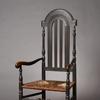Manzanar: The Wartime Photographs of Ansel Adams Opens Oct. 8 at LA's Skirball
- LOS ANGELES, California
- /
- October 05, 2015

The Skirball Cultural Center presents Manzanar: The Wartime Photographs of Ansel Adams, featuring fifty little-known photographs by Ansel Adams (1902–1984) that depict the treatment of Japanese Americans at the Manzanar incarceration camp in central California. Taken during World War II, the black and white works were originally published in Adams’s book Born Free and Equal (1944) in which he protested what he called the "enforced exodus" of a minority of citizens.
On view at the Skirball from October 8, 2015 through February 21, 2016, Manzanar: The Wartime Photographs of Ansel Adams offers insight into a disquieting period in California and American history.

"Ansel Adams’s photographs of Manzanar bear witness to the resilience of the human spirit and the urgency of confronting injustice, embracing diversity, and preserving community," remarks Robert Kirschner, Skirball Museum Director. "Powerful forms of civic and artistic expression, the images capture Adams’s steadfast message of compassion and tolerance, and call us to recommit to this nation’s highest democratic ideals."
In the exhibition, Adams’s portfolio is complemented by the work of contemporaries Dorothea Lange and Toyo Miyatake, who also photographed Manzanar during the war. Also on view are documents, publications, propaganda materials, artifacts, and artwork detailing life and conditions at the camp.

Manzanar: The Wartime Photographs of Ansel Adams was organized by Photographic Traveling Exhibitions, Los Angeles, California. It is presented at the Skirball in association with the Japanese American National Museum.
Concurrently, the Skirball presents Citizen 13660: The Art of Miné Okubo. Based on an illustrated memoir of the same name, this companion exhibition features the work of Japanese American artist Miné Okubo (1912–2001), who recorded her everyday struggles at two incarceration camps through poignant pen and ink drawings and incisive commentary.
Citizen 13660: The Art of Miné Okubo is also presented in association with the Japanese American National Museum.
Located about 220 miles north of Los Angeles, the Manzanar War Relocation Center was the first of ten camps established to detain approximately 120,000 individuals of Japanese descent in the wake of the December 7, 1941 attack on Pearl Harbor. Pressured by the fear and paranoia sweeping the nation, President Franklin D. Roosevelt issued Executive Order 9066 authorizing the Secretary of War to "exclude" any residents from prescribed West Coast military areas in order to protect "against espionage and sabotage." The majority of Japanese detained were native-born Americans or legal residents. Ultimately, Manzanar held 11,070 individuals, more than 90% from Los Angeles.
The exhibition opens with vivid examples of anti-Japanese propaganda, including cover art and articles from prominent publications such as Collier’s, LIFE, Vanity Fair, and Time. The pre-evacuation period is observed in numerous photographs Dorothea Lange took for the War Relocation Authority in 1942, one year prior to Adams’s own visit to Manzanar. Lange’s poignant images*many of them impounded for negatively portraying the government*document Japanese Americans being forcibly relocated, leaving behind shops and schools, boarding crowded trains, and encountering primitive living quarters at the camp.
Highly regarded for his majestic landscapes, Ansel Adams was already an accomplished fine art and commercial photographer at the onset of the war. In 1943, his friend Ralph Merritt, director of the Manzanar War Relocation Center, invited Adams to document life at the camp. While several views of the austere Eastern Sierras recall Adams’s signature subject matter, the majority of Adams’s images taken at Manzanar focus on people and their day-to-day lives there. Many portraits show individuals in their professional attire*as military personnel, a nurse, an artist, farmers, an electrician, among many others. Other photographs depict individuals engaged in various activities, such as baseball, Sunday school, a science lecture, working the potato fields, and standing in line at the mess hall. Adams also took photographs of several editions of the camp newspaper, the Manzanar Free Press, which was published by the incarcerated Nikkei (Japanese Americans).
Later sections of the exhibition chronicle day-to-day life at Manzanar. Incarceration records and identification cards represent how those at Manzanar lost their full rights and protections as American citizens. Other objects illustrate efforts to lead a "normal" life, including a movie ticket, senior prom program, and artwork made at the camp. Schoolchildren’s essays, video interviews, and home movies offer individual narratives. In contrast to Lange’s and Adams’s depictions of Manzanar, the photographs by Toyo Miyatake, who was incarcerated there with his family, provide an insider’s record of the experience. Shooting surreptitiously at first, Miyatake eventually became the official camp photographer.
The final section of the exhibition documents Japanese American acts of resistance. Newspaper articles cite fatal riots, and a legal brief is an example of lawsuits filed to protest incarceration. Several items relate to the prosecution of members of the Heart Mountain Fair Play Committee, a group of young men who refused to cooperate with the military draft without first having their basic rights as citizens restored.














_-3100x100_c.jpg)

